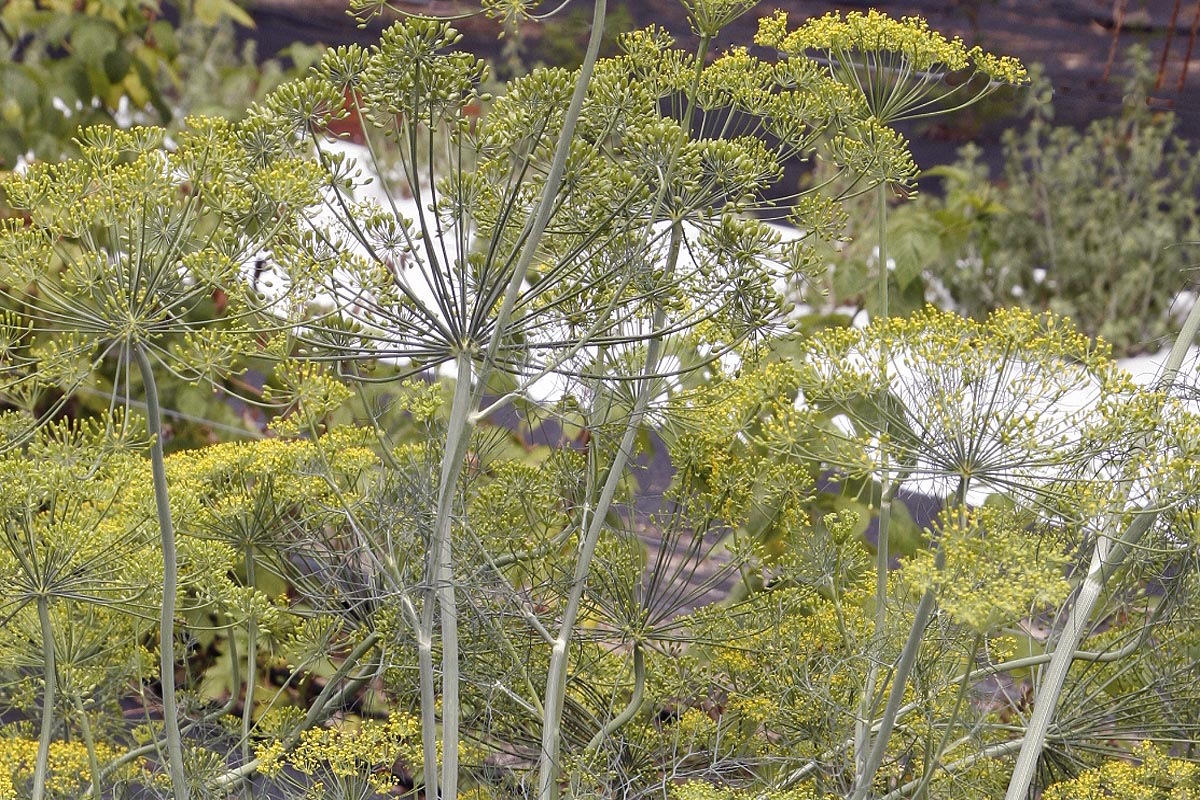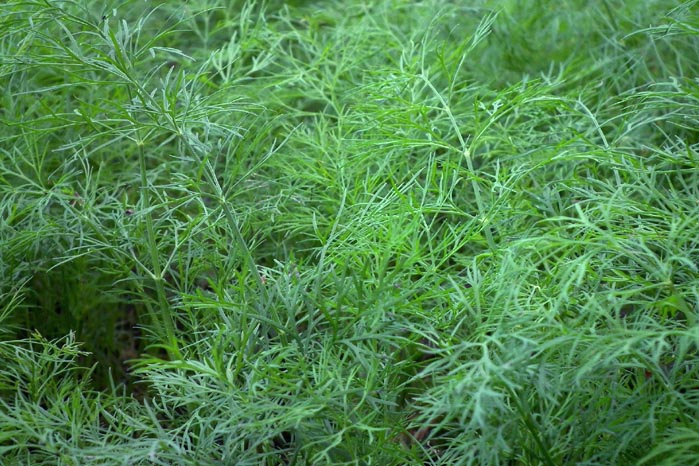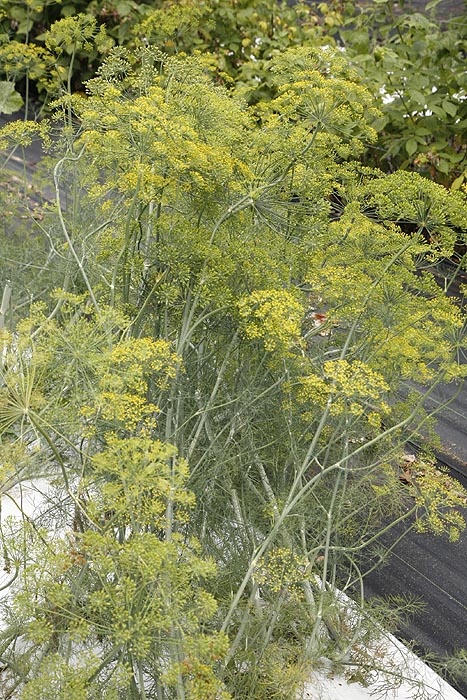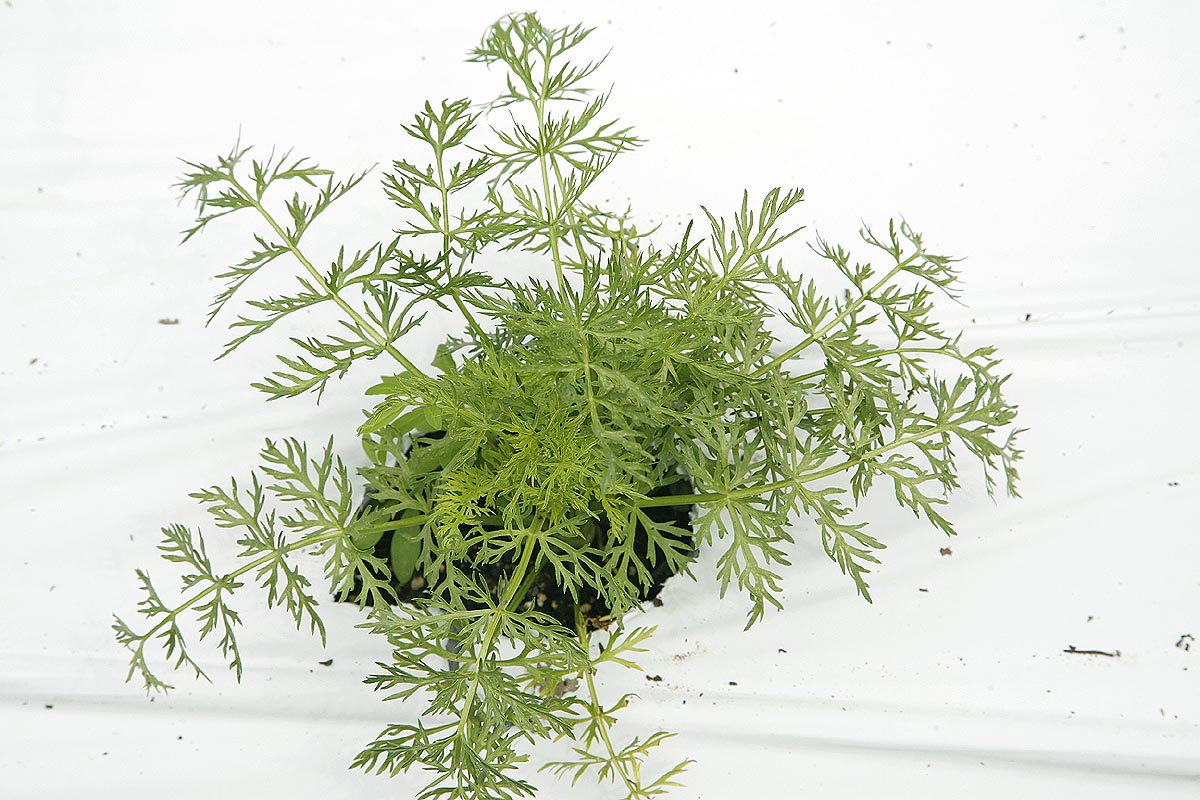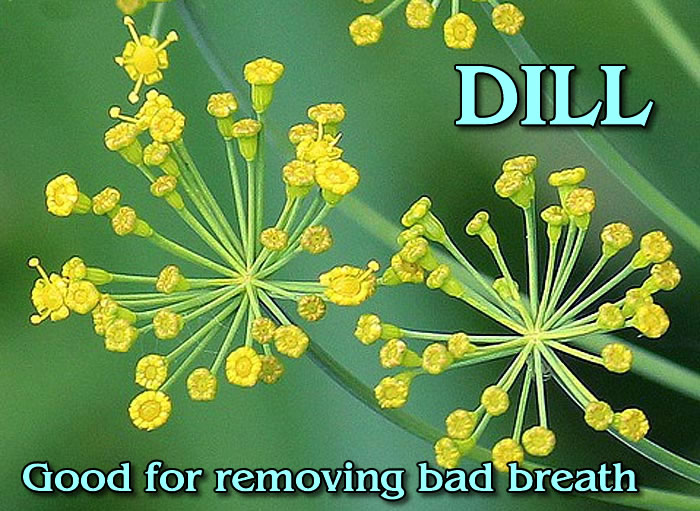Probably one of the easiest herbs to grow making it a excellent choice for beginners or children garden. An tall annual plant with delicate feathery foliage and tall flower stalks with tiny yellow flowers followed by flat seeds that are used in dill pickles. Dill likes full sun and a coolish climate so grow early in the season in hotter areas. A tall attractive herb makes a good addition to the garden border where the feathery foliage contrast well with many other plants. Both the leaves and the seeds are used in the kitchen and the flowers are attractive to both butterflies and native bees.
Keep the soil moist once the seeds are planted. Dill will need a regular watering schedule, using a soaker hose is ideal and cuts down on workload.
Ensure that the soil has been loosened for at least two spade depths so that the taproot can grow down easily. Dill will not grow well on thin soils or ones where there is a hard layer close to the surface that its root cannot penetrate. Break up the soil and add a little organic material before planting so the roots can grow easily.
For a regular supply of leaves sow more seeds every 2-3 weeks to ensure leaves are fresh and ensure not all plants have bolted to seed.
In warmer climates more success is often achieved by planting Dill in the late fall and allowing it to germinate as early as it likes the next spring, or even in the fall if temperatures are warm enough. This may be the only way to achieve a good crop in hotter climates.
Starting indoors. If starting indoors is necessary or desired plant seeds individual biodegradable pots (such as peat) so that the whole pot can be planted in the ground to avoid disturbing the roots.
Dill prefers slightly acidic sandy loam soils for its best production of seeds. A pH range of 5.5 - 6.5 is best. It will grown under an neutral or slightly alkaline conditions but does not do well on very alkaline soils. It likes some organic content in the soils to grow most strongly, these may need to be replenished frequently if growing on the same spot as Dill will drain the soil of nutrients. Adding fertilizer during the year is recommended. Use either a side dressing or a liquid feed.
Because of Dills long tap root it will need soil that has been loosened for a considerable depth - at least two spades deep. It will not grow well on thin soils or ones where there is a hard layer close to the surface that its root cannot penetrate. Break up the soil and add a little organic material before planting so the roots can grow easily. The soil needs to be well drained but it will also need regular watering for best production. A soaker hose in the garden is ideal.
Locate plants in a fairly sheltered location as the stems are susceptible to wind damage. Being hollow they cannot withstand strong wind gusts and fall to the ground, making the seeds more difficult to harvest and clean.
Hot weather will trigger Dill to bloom so seeds can come on quickly in hot areas. This will also suppress the growth of new leaves so dill weed is reduced.
The leaves can also be attractive to aphids, however if beneficial insects are encouraged in the garden these can usually be kept under control.
The main problem is swallowtail caterpillars. They love to feast on dill leaves. For butterfly lovers this produces a dilemma as the caterpillars can reduce a plant to a few stalks just above the ground in a few days. If you like the butterflies the best solution is to grow extra dill, some for you and some for them. If not caterpillars can easily be plucked off the plants by hand without using any chemicals. Butterfly lovers may want to move caterpillar from 'your' plants to 'their' plants to protect the leaves you want to eat.
Seeds. When the seeds are ripe they turn a golden brown color. Seed heads can be snipped off individually on a warm dry day. Harvest later in the day to ensure all moisture is gone. If seed heads are ripening at different times then single head harvesting is necessary to prevent seed loss. IF they all ripen together the whole plant can be cut down and removed. Take care not to shake the seed head too much or the seeds will drop off. Turning upside down in a large bin is an ideal way to ensure little seed loss. Dill will reseed itself but usually not where you want it to grown to containment is the best preventer. Seed heads can then be threshed to remove the seeds which are stored in air tight containers in a cool dark place. IF the seeds are not entirely ripe they can be spread out on a table or cloth in the sunshine to ripen either before or after threshing. Do not use artificial heat to dry the seeds or some of the flavor will be lost.
The fresh leaves are commonly used in salads and to flavor many other foods and dishes. This is especially true of sauces where they impart a more subtle flavor than the seeds. The leaves are considered especially good with almond, shrimp, deviled eggs, green beans, cauliflower, beets, soups, cottage and cream cheese. Leaves lose their flavor if cooked for too long so should be added just before the dish is complete.
Companion Planting
Grow dill near cabbage and lettuce and it will improve the health of these plants. It is also good near onions, sweet corn, and cucumbers. Bad companions.
Dill should not be grown near fennel if the seeds of either plant are intended for seed planting the next season as the two plants can hybridize.
Don't grow it near tomatoes as it can attract tomato horn worm. Grow it on the other end of the garden away from tomatoes.
Don't grow near Carrots, Caraway And Lavender.






